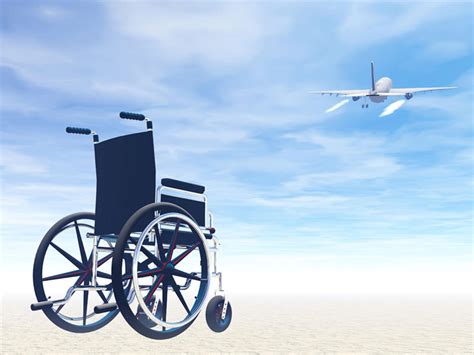Airline Travel Help for Handicap Passengers

Introduction to Airline Travel for Handicap Passengers
Air travel can be a daunting experience for anyone, but for individuals with disabilities, it can be especially challenging. From navigating airport terminals to boarding flights, handicap passengers often face unique obstacles that can make their journey more difficult. However, with the right knowledge and preparation, travelers with disabilities can have a smooth and enjoyable flight experience. In this article, we will explore the various aspects of airline travel for handicap passengers, including pre-flight preparations, airport assistance, and in-flight accommodations.
Pre-Flight Preparations for Handicap Passengers
Before booking a flight, it is essential for handicap passengers to research and understand the airline’s policies and procedures for accommodating travelers with disabilities. This includes: * Informing the airline about their disability and any special requirements they may have * Requesting a seat with more legroom or a seat that is closer to the lavatory * Bringing any necessary medical equipment or documentation * Arriving at the airport with plenty of time to spare before the flight
Some airlines also offer special services for handicap passengers, such as: * Wheelchair assistance * Escort services * Priority boarding * Additional storage for medical equipment
Airport Assistance for Handicap Passengers
Airports are required to provide reasonable accommodations for travelers with disabilities, including: * Wheelchair-accessible ramps and elevators * Accessible restrooms and drinking fountains * TTY phones and video phones for passengers who are deaf or hard of hearing * Assistance with baggage claim and customs
Handicap passengers can also request assistance from airport staff, such as: * Wheelchair pushes * Escort services * Help with checking in and printing boarding passes
In-Flight Accommodations for Handicap Passengers
Airlines are required to provide accessible seating for handicap passengers, including: * Seats with more legroom * Seats that are closer to the lavatory * Seats with movable armrests
In addition, airlines may also offer special in-flight services, such as: * Priority boarding * Extra assistance from flight attendants * Access to accessible lavatories
Some airlines also have accessible aircraft that are designed to accommodate travelers with disabilities, including: * Wide aisles and doorways * Accessible lavatories * Storage for medical equipment
| Airline | Accessible Seating | Special Services |
|---|---|---|
| American Airlines | Seats with more legroom | Wheelchair assistance, escort services |
| Delta Air Lines | Seats with movable armrests | Priority boarding, extra assistance from flight attendants |
| United Airlines | Seats closer to the lavatory | Wheelchair pushes, help with checking in and printing boarding passes |
🚨 Note: It is essential for handicap passengers to inform the airline about their disability and any special requirements they may have at least 48 hours before the flight to ensure that the necessary arrangements can be made.
Additional Tips for Handicap Passengers
In addition to the above information, here are some additional tips for handicap passengers: * Be prepared to provide medical documentation or a doctor’s note to the airline * Bring any necessary medical equipment or supplies * Consider booking a direct flight to minimize the risk of delays or missed connections * Take advantage of airport lounges or other amenities that may be available to handicap passengers
In summary, airline travel can be a challenging experience for handicap passengers, but with the right knowledge and preparation, it can also be a smooth and enjoyable experience. By understanding the airline’s policies and procedures, requesting special services, and taking advantage of airport assistance, handicap passengers can have a successful and stress-free flight. As we reflect on the key points discussed, it is clear that planning and preparation are essential for a successful flight experience, and by following these tips and guidelines, handicap passengers can ensure a safe and enjoyable journey.
What is the best way to request special assistance from an airline?
+
The best way to request special assistance from an airline is to inform them about your disability and any special requirements you may have at least 48 hours before the flight. You can do this by contacting the airline’s customer service department or by filling out a special request form on their website.
What types of accessible seating are available on airplanes?
+
Airlines offer a variety of accessible seating options, including seats with more legroom, seats that are closer to the lavatory, and seats with movable armrests. The specific types of accessible seating available will vary depending on the airline and the type of aircraft.
Can I bring my own wheelchair or mobility aid on the plane?
+
Yes, you can bring your own wheelchair or mobility aid on the plane, but you must inform the airline about it at least 48 hours before the flight. The airline will need to know the size and type of your wheelchair or mobility aid to ensure that it can be safely stowed on the plane.